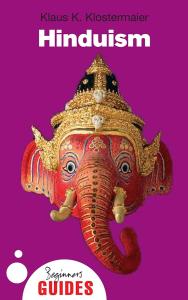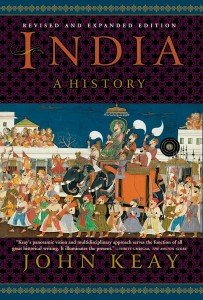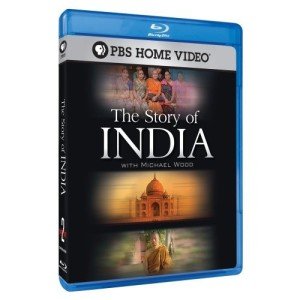A Review of
The Aśrama System:
The History and Hermeneutics of a Religious Institution
by Patrick Olivelle
Exploring the Origins, Interpretations, and Impact of the Aśrama System in Indian Religious Tradition
Patrick Olivelle’s The Aśrama System: The History and Hermeneutics of a Religious Institution, published by Munshiram Manoharlal Publishing Pvt. Ltd. in 2004, stands as a monumental contribution to the study of Indian religious institutions. In this work, Olivelle examines the origins, historical development, and hermeneutics of the aśrama system — the four-stage model of life (student, householder, forest dweller, and renouncer) that has been a central feature of Hindu religious thought for centuries. Through meticulous textual analysis, historical contextualization, and interpretative rigor, Olivelle challenges many longstanding assumptions about the antiquity and function of the aśrama system, compelling readers to reconsider the very framework through which Indian religious life is understood.
About the Author
Patrick Olivelle is an internationally renowned scholar of Sanskrit, Indian religions, and ancient Indian literature. Born in Sri Lanka and educated both there and in the United States, Olivelle received his PhD from the University of Pennsylvania. He is Professor Emeritus of Sanskrit and Indian Religions at the University of Texas at Austin. Over his distinguished career, Olivelle has published extensively on the Upaniṣads, Dharmaśāstra, and renunciant traditions, bringing to his research a rare combination of philological precision, historical awareness, and interpretive sophistication. His translations and critical editions—including major works such as Upaniṣads (Oxford World’s Classics) and Dharmasūtras: The Law Codes of Ancient India—have become foundational texts for students and scholars alike. Olivelle’s work is characterized by its methodological rigor, careful attention to textual nuance, and a commitment to situating Indian religious phenomena in their broader historical and cultural contexts.
Summary of the Book
Olivelle’s book is organized around a central question: how did the aśrama system—often regarded as a timeless and unchanging core of Hindu religious life—emerge, evolve, and acquire its authoritative status? The book is divided into several chapters, each tackling a different facet of the aśrama system’s history and interpretation.
Olivelle begins by surveying the primary textual sources for the aśrama system, including the Vedas, Brahmanas, Aranyakas, Upaniṣads, Dharmaśāstras, and later theological and legal treatises. He demonstrates that the familiar fourfold system (brahmacarya, gṛhastha, vānaprastha, and sannyāsa) is, in fact, the product of a complex historical process rather than a primordial feature of Vedic religion. The earliest Vedic texts, Olivelle argues, do not contain any reference to systematic progression through four life stages. Rather, the system as we know it only crystallized later, as various social and religious factors converged.
A significant portion of the book is dedicated to analyzing how the aśrama system is presented in different texts and how these presentations reflect the evolving concerns of Brahmanical authors. Olivelle distinguishes between competing models: one in which the stages are sequential (a person progresses through each stage during their lifetime), and another in which they are alternative paths (a person chooses one among several ideal lifestyles). He explores the tensions and negotiations between these models, showing how they mirror broader debates about the goals of life (puruṣārthas), the value of renunciation versus worldly engagement, and the authority of the householder versus the ascetic.
Olivelle also investigates the uses of the aśrama system as a hermeneutical tool—that is, how later commentators and theologians have interpreted, justified, and re-articulated the system in light of changing historical and social realities. The book closes with reflections on the impact of the aśrama system on Indian society and its continuing significance in contemporary Hindu thought.
Critical Analysis
Olivelle’s The Aśrama System is a masterclass in historical and textual criticism. One of its greatest strengths lies in its attentive, nuanced reading of primary sources. Olivelle does not take the received categories of Hindu tradition at face value; instead, he subjects them to rigorous scrutiny, tracing their evolution across time and exposing the contingent processes that underlie seemingly “timeless” doctrines. This critical approach is particularly evident in his analysis of the Dharmaśāstras, where he identifies competing ideologies regarding the role of renunciation, the responsibilities of householders, and the ultimate goals of human life.
Another significant contribution of the book is Olivelle’s insistence that the aśrama system is not a static institution, but rather a dynamic field of contestation and negotiation. The very notion of a “system” is, for Olivelle, a retrospective construction—one that obscures the diversity and fluidity of actual religious life. He marshals evidence from a vast array of texts to demonstrate that the boundaries between stages were often porous, and that individual lives rarely conformed neatly to scriptural prescriptions.
Olivelle’s discussion of the alternative and sequential models of aśrama life is especially illuminating. By foregrounding these divergent paradigms, he shows how the aśrama system served both to legitimate established social roles and to accommodate radical forms of asceticism. This dual function, Olivelle argues, is a testament to the adaptive power of the Brahmanical tradition—a tradition capable of absorbing and reconfiguring competing ideals of religious life.
At the same time, Olivelle is careful not to reduce the aśrama system to a mere social mechanism. His analysis attends to the philosophical and theological stakes of the debates he chronicles, highlighting how questions about the nature of dharma (duty), artha (wealth), kāma (pleasure), and mokṣa (liberation) animated the development of the system. As a result, the book offers a rich, multidimensional account of the intersection between ethics, ritual, and social organization.
However, the book is not without its limitations. Olivelle’s focus on Brahmanical textual traditions means that the voices and experiences of non-Brahmanical communities—such as women, lower castes, and others—are largely absent from the narrative. While the sources themselves justify this focus, it does leave the reader wishing for a more inclusive account of how the aśrama system was received, resisted, or reimagined by marginalized groups.
Additionally, the density of Olivelle’s argumentation, while a testament to his erudition, can be challenging for non-specialists. The book presumes a familiarity with Sanskrit terminology, textual conventions, and the broader landscape of Indian intellectual history. For seasoned scholars, however, this is a virtue rather than a vice; Olivelle’s detailed exegesis rewards close and sustained engagement.
Impact and Significance
The Aśrama System has had a profound impact on the study of Indian religions and historical hermeneutics. By exposing the constructed nature of one of Hinduism’s foundational frameworks, Olivelle has opened up new avenues for research into the interplay between text and practice, as well as ideal and reality. His work has encouraged scholars to question essentialist accounts of “Hinduism” and to attend to the messy, plural, and evolving character of Indian religious life.
Moreover, Olivelle’s study is of great relevance to contemporary debates within Hinduism, particularly those concerning the role of asceticism, the status of women, and the responsibilities of householders. In an era when appeals to “ancient tradition” often mask contested histories, Olivelle’s book offers a salutary reminder that the past is always more complicated than we imagine.
Conclusion
Patrick Olivelle’s The Aśrama System: The History and Hermeneutics of a Religious Institution is an indispensable resource for anyone interested in the history of Indian religions, the interpretation of sacred texts, or the construction of religious institutions. Combining philological rigor with interpretive imagination, Olivelle challenges us to rethink what we know about the past—and to approach the study of religion with both critical acuity and intellectual humility. While not without its limitations, the book’s insights will remain influential for years to come, inspiring new generations of scholars to interrogate the histories that shape our present.






